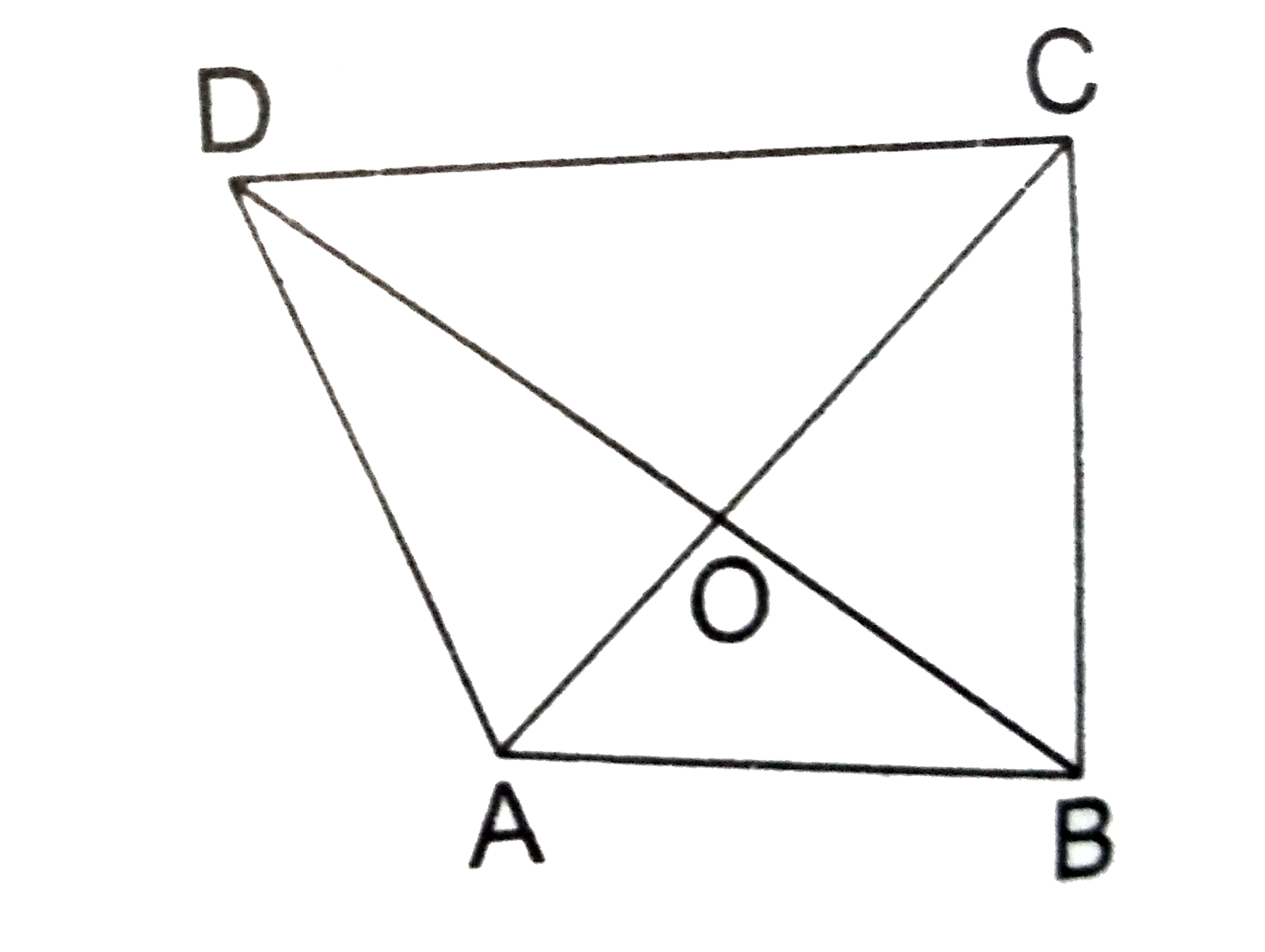Diagonals AC and BD of a quadrilateral ABCD intersect at O in such a way thatProve that ABCD is a trapezium.
To prove that quadrilateral ABCD is a trapezium given that the area of triangle AOD is equal to the area of triangle BOC, we can follow these steps:
Step 1: Understand the Given Information
We know that diagonals AC and BD of quadrilateral ABCD intersect at point O such that:
Area of △AOD=Area of △BOC
Step 2: Add the Areas
We can add the areas of triangles AOD and BOC:
Area of △AOD+Area of △BOC=2×Area of △BOC
This means:
Area of △AOD+Area of △BOC=Area of △ACD+Area of △BDC
Step 3: Identify the Triangles
From the previous step, we can identify that:
- The area of triangle ACD is equal to the area of triangle BDC since both are equal to the sum of the areas of triangles AOD and BOC.
Step 4: Use the Area Property
According to the theorem, if two triangles have the same base and equal areas, they lie between the same parallels. Here, triangles ACD and BDC share the base DC.
Step 5: Conclude Parallelism
Since triangles ACD and BDC have the same base DC and equal areas, it follows that:
- Line AB is parallel to line DC.
Step 6: Define Trapezium
A trapezium (or trapezoid) is defined as a quadrilateral with at least one pair of parallel sides. Since we have established that AB is parallel to DC, we conclude that:
- Quadrilateral ABCD is a trapezium.
Final Conclusion
Thus, we have proved that quadrilateral ABCD is a trapezium.
---
We know that diagonals AC and BD of quadrilateral ABCD intersect at point O such that:
Area of △AOD=Area of △BOC
We can add the areas of triangles AOD and BOC:
Area of △AOD+Area of △BOC=2×Area of △BOC
This means:
Area of △AOD+Area of △BOC=Area of △ACD+Area of △BDC
From the previous step, we can identify that:
- The area of triangle ACD is equal to the area of triangle BDC since both are equal to the sum of the areas of triangles AOD and BOC.
According to the theorem, if two triangles have the same base and equal areas, they lie between the same parallels. Here, triangles ACD and BDC share the base DC.
Since triangles ACD and BDC have the same base DC and equal areas, it follows that:
- Line AB is parallel to line DC.
A trapezium (or trapezoid) is defined as a quadrilateral with at least one pair of parallel sides. Since we have established that AB is parallel to DC, we conclude that:
- Quadrilateral ABCD is a trapezium.
Thus, we have proved that quadrilateral ABCD is a trapezium.
Topper's Solved these Questions
- AREAS OF PARALLELOGRAMS AND TRIANGLESBOOK - NCERTCHAPTER - AREAS OF PARALLELOGRAMS AND TRIANGLESEXERCISE - Solved Examples
4 Videos
- AREAS OF PARALLELOGRAMS AND TRIANGLESBOOK - NCERTCHAPTER - AREAS OF PARALLELOGRAMS AND TRIANGLESEXERCISE - Exercise 9.2
6 Videos
- CIRCLESBOOK - NCERTCHAPTER - CIRCLESEXERCISE - EXERCISE 10.2
2 Videos
Similar Questions
Diagonals AC and BD of a quadrilateral ABCD intersect at O in such a way thatar(AOD)=ar(BOC).Prove that ABCD is a trapezium.
View SolutionDiagonals AC and BD of a quadrilateral ABCD intersect at O in such a way that ar(AOD)=ar(BOC) . Prove that ABCD is a trapezium.
View SolutionDiagonals AC and BD of a quadrilateral ABCD intersect at O in such a way that ar (AOD)=ar ( BOC). Prove that ABCD is a trapezium.
View SolutionDiagonals AC and BD of a quadrilateral ABCD intersect at O in such a way that ar(ΔAOD) = ar(ΔBOC). Prove that ABCD is a trapezium.
View SolutionThe diagonal of a quadrilateral ABCD intersect each other at the point D such that AOBO=CODO. Show that ABCD is a trapezium.
View SolutionThe diagonals of a quadrilateral ABCD intersect each other at the point O such that AOBO=CODO. Show that ABCD is a trapezium.
View SolutionIn the figure, diagonals AC and BD of quadrilateral ABCD intersect at 0 such that OB = OD. If AB = CD, then show that

DA I I CB or ABCD is a parallelogram.
View SolutionIn Fig 9.25, diagonals AC and BD of quadrilateral ABCD intersect at O such that OB = OD.If AB=CD , then show that
View SolutionIn the adjoining figure, the diagonals AC and BD of a quadrilateral ABCD intersect at O.
If BO=OD, prove that
ar(△ABC)=ar(△ADC).

View SolutionIn the figure, diagonals AC and BD of quadrilateral ABCD intersect at O such that OB = OD. If AB = CD, then show that

ar(ΔDOC) = ar(ΔAOB)
View Solution
